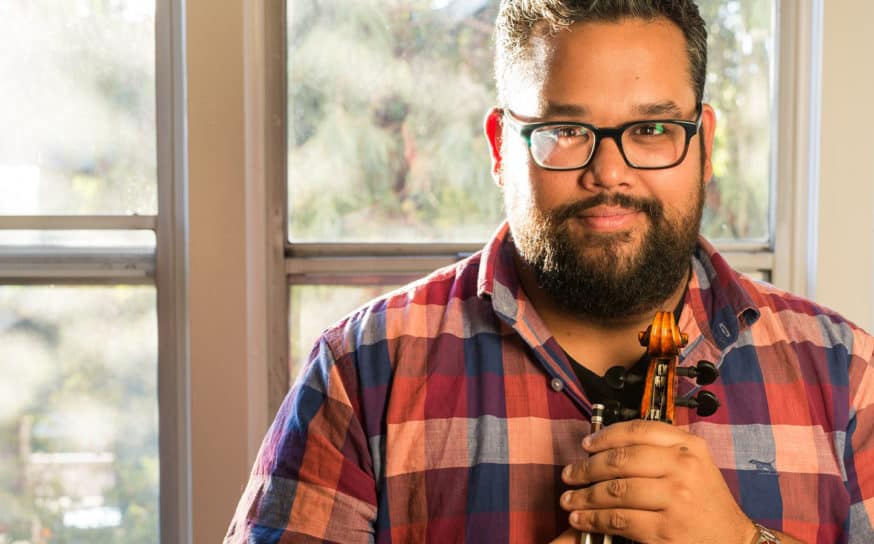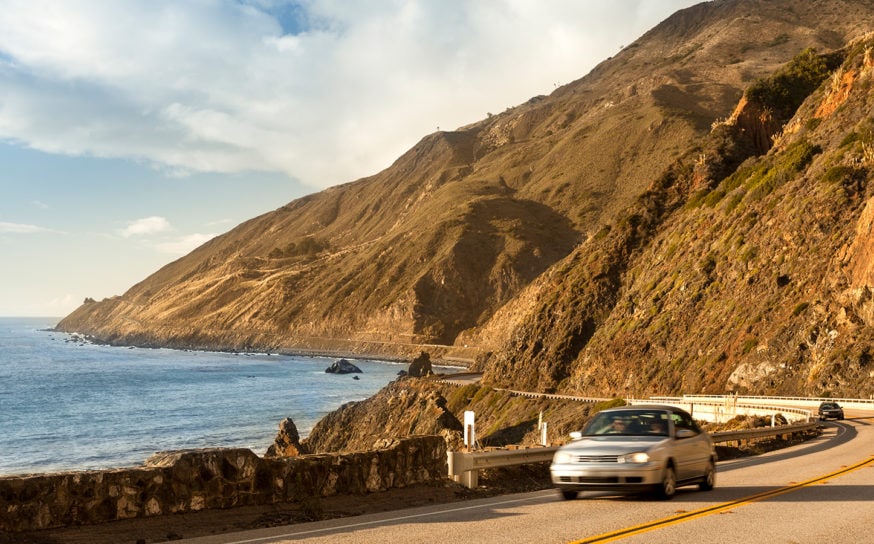It’s been 31 days since the decriminalization of recreational marijuana use, and California’s seen plenty of highs (sorry, couldn’t resist) and some lows too.
Let’s talk about the elephant in the room first … the little, Southern one currently serving under President Donald Trump.
With little love lost between Sacramento and D.C., and the absence of a calming cloud of CBD in the nation’s capital, Attorney General Jeff Sessions struck out at California and other states either with legalized weed, or a vote away from making it so. Just three days after Californian’s law took effect, Sessions rescinded what is known as the “Cole Memo.” Since it’s possible many of us haven’t heard about said memo until now, it essentially stated the Feds wouldn’t come after people for having drugs in states where those drugs were considered legal.
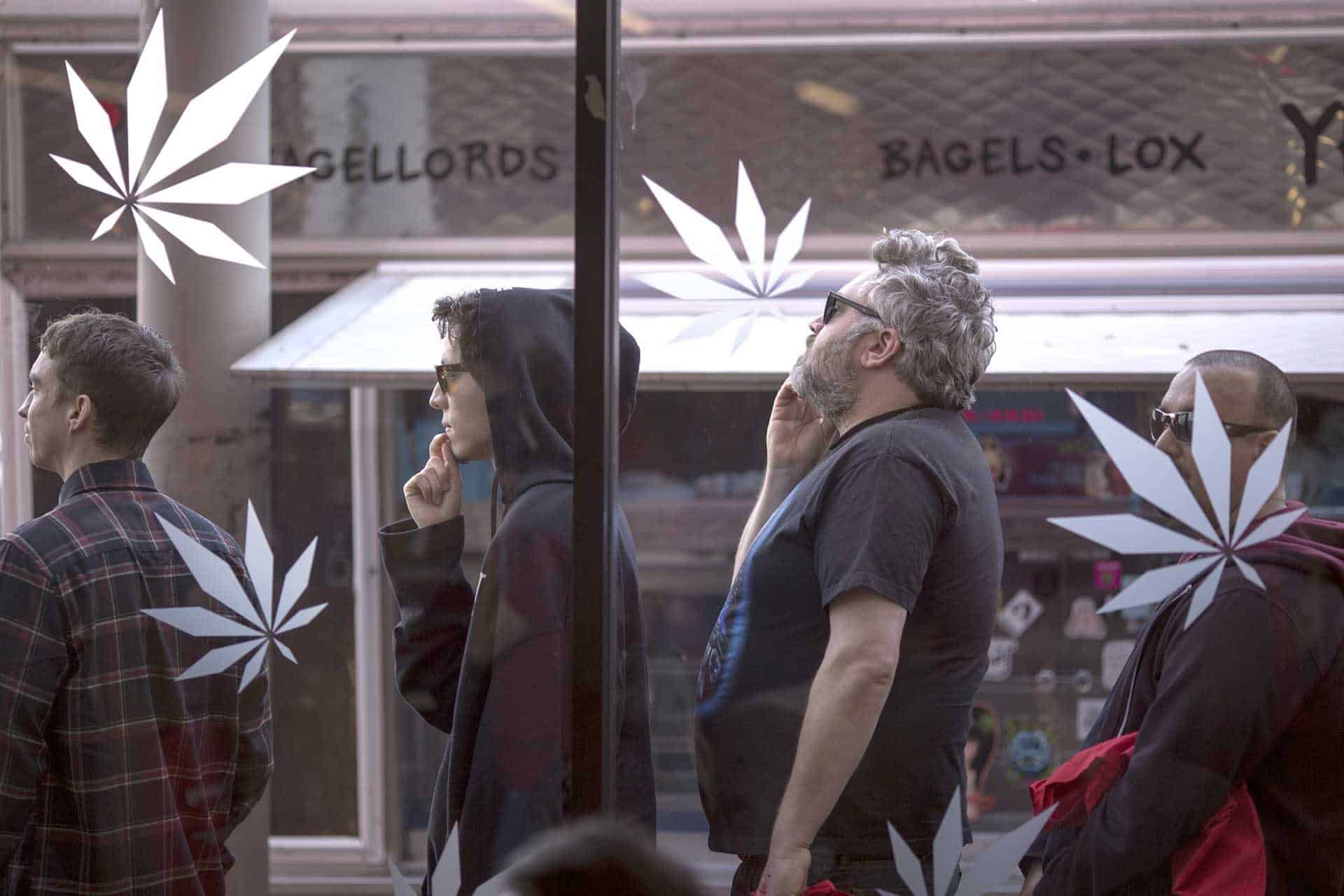
People stand in line to get into MedMen, one of the first two Los Angeles area pot shops that began selling marijuana for recreational use under the new California marijuana law, on January 2, 2018 in West Hollywood, California. (Photo by David McNew/Getty Images)
Writing for the Sac Bee, Erwin Chemerinsky, Dean of the UC Berkley School of Law, argued that “there is little benefit of illegality” and pointed out that arresting people for simple possession was expensive and tended to target people of color. A group of mayors from across the country, including those of Long Beach and San Leandro, signed a letter to Sessions condemning his actions, calling the decision “neither tough nor smart.” Despite this, Session’s move is already putting a premature damper on California’s weed industry.
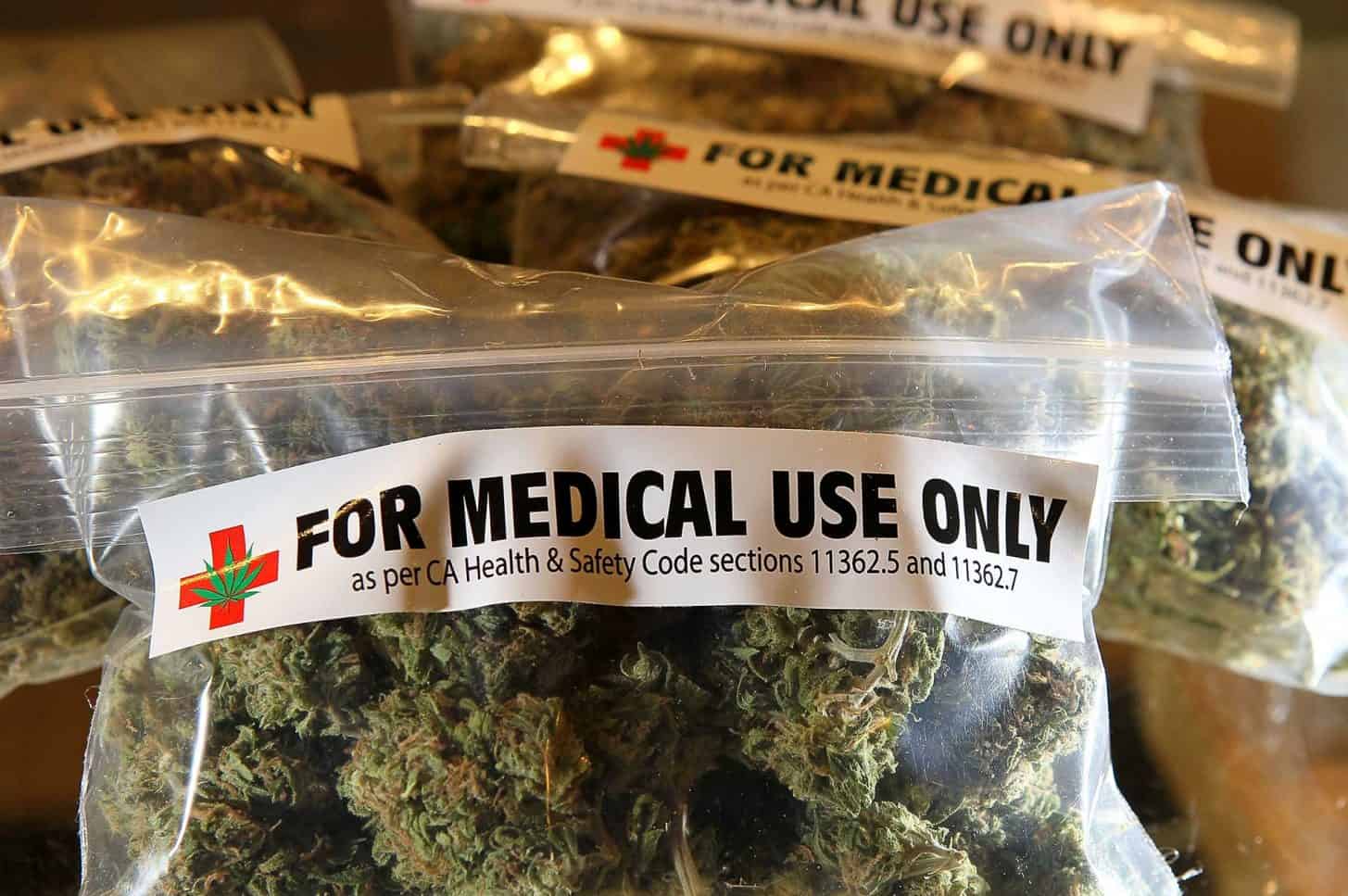
One-ounce bags of medicinal marijuana are displayed at the Berkeley Patients Group in Berkeley, California. (Photo by Justin Sullivan/Getty Images)
The first major impact: banking. Money is green, but weed money isn’t welcome at most banks. Federally, marijuana remains a Schedule 1 substance (the same level as heroin and a level higher than meth and cocaine). Because of this, anyone doing business with weed, even if it is legal where the business is located, would risk violating federal law. Banks can notify authorities of a desire to work with cannabis, but so far less than 1% of institutions have tapped into this growing industry and most pot business continue to work with cash. Even taxes have to be paid in cash, and as such, the current advice of the California Treasury’s Cannabis Banking Working Group is that the government use armed couriers to collect payments.
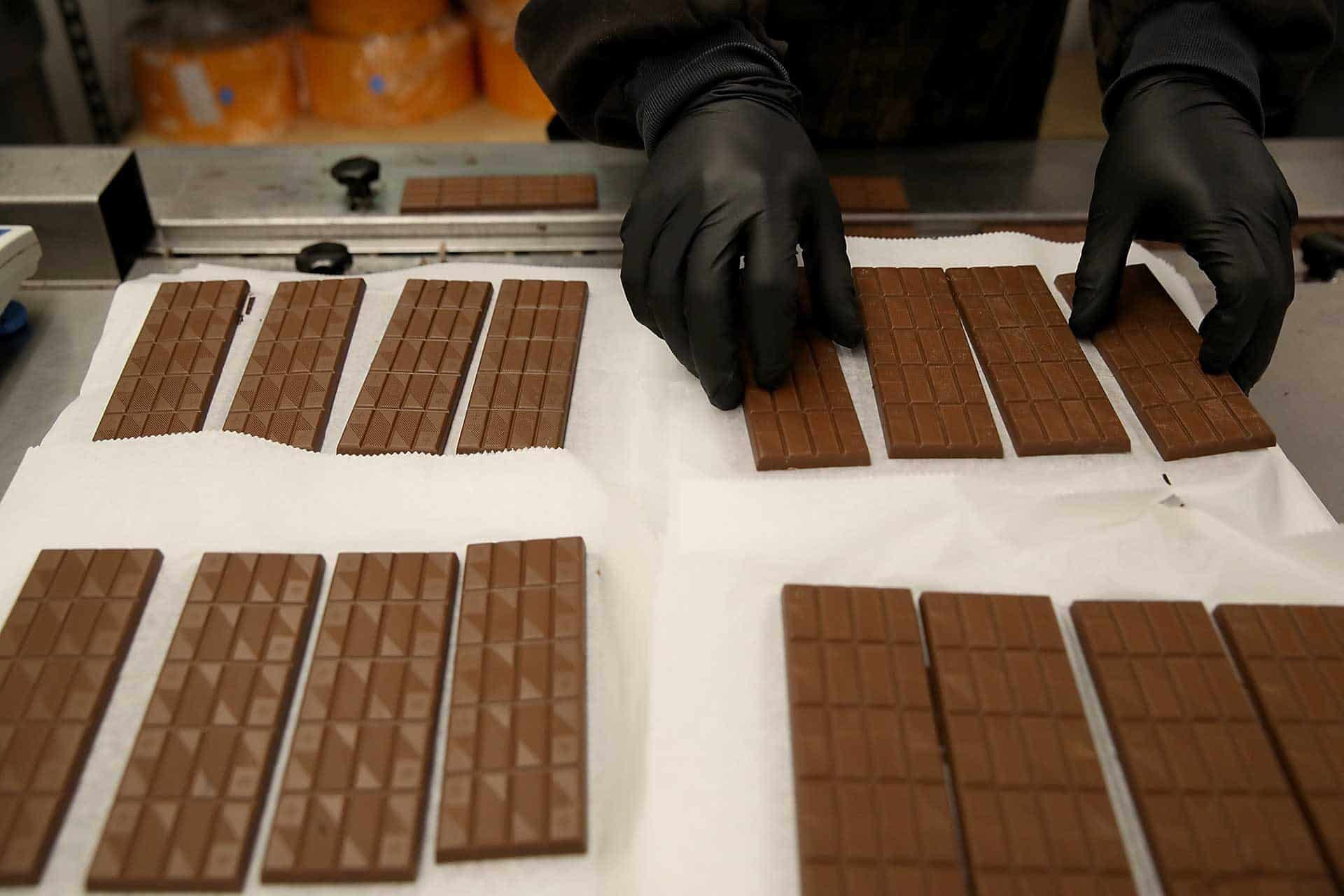
A worker prepares to package freshly made marijuana infused chocolate bars at Kiva Confections on January 16, 2018 in Oakland, California. Less than one month after recreational marijuana sales became legal in California, dispensaries are reporting a shortage in pot edibles. The number of manufacturers in the state has been reduced by nearly two thirds due to new regulations and state approved potency levels. (Photo by Justin Sullivan/Getty Images)
It’s not as if weed is a small industry either. Venture capital firms have invested hundreds of millions into the cannabis industry in the U.S. and abroad and can count Snoop Dogg, who backs the website Merry Jane, which collaborated on the new “only delicious when you’re stoned” Jack in the Box Munchie Meal, and Silicon Valley entrepreneur Peter Thiel among their backers. These funds don’t seem hugely concerned with the change in regulations and are very keen to be part of the estimated $7 billion market in California after the success of investments in Colorado. But other backers yanked their funding right after Session’s announcement, citing it too risky to jump in the pot just yet.
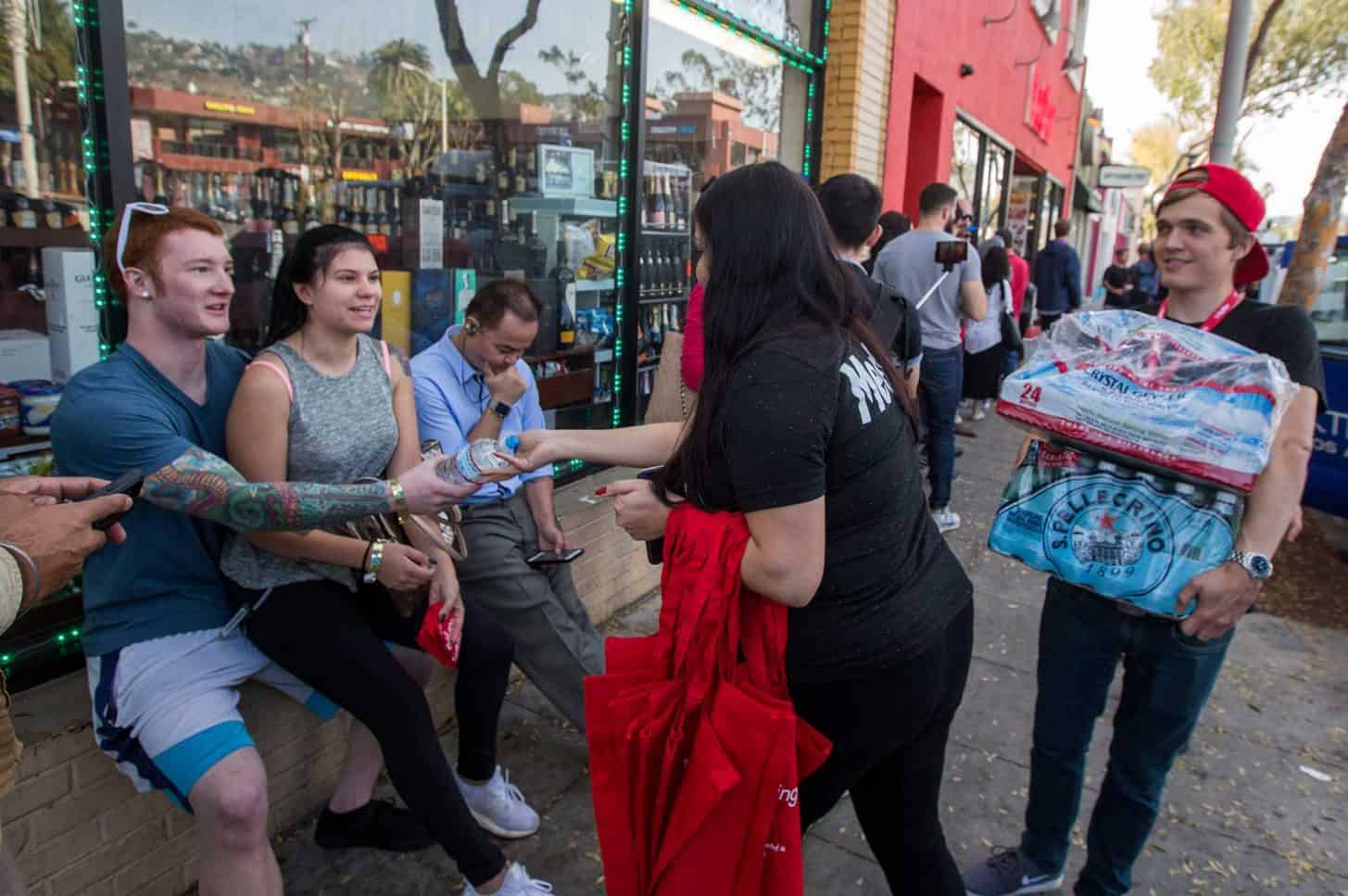
Employees give water to people waiting in line to get into MedMen in West Hollywood, California. (Photo by David McNew/Getty Images)
But there’s still an influx of money, and lessons learned from Colorado’s pioneering effort and other states that already legalized weed, so the options available to your average consumer are growing. And this isn’t all about getting high either. Missy Bradley of Stillwater Brands tells us that their THC-infused beverages are dosed at only 2.5 mg. “As more people in Colorado have become comfortable with cannabis and visiting dispensaries, we’ve seen micro-dosed products gain in popularity,” she shares. Along with different doses, California is already merging its tourist industry with cannabis using a model long established by wine growers in Napa, Sonoma and beyond. Although weed might get tourists a different kind of “sideways,” at least one grower in Mendocino county has taken over a winery and is looking to create a craft cannabis experience complete with tours and samplings.
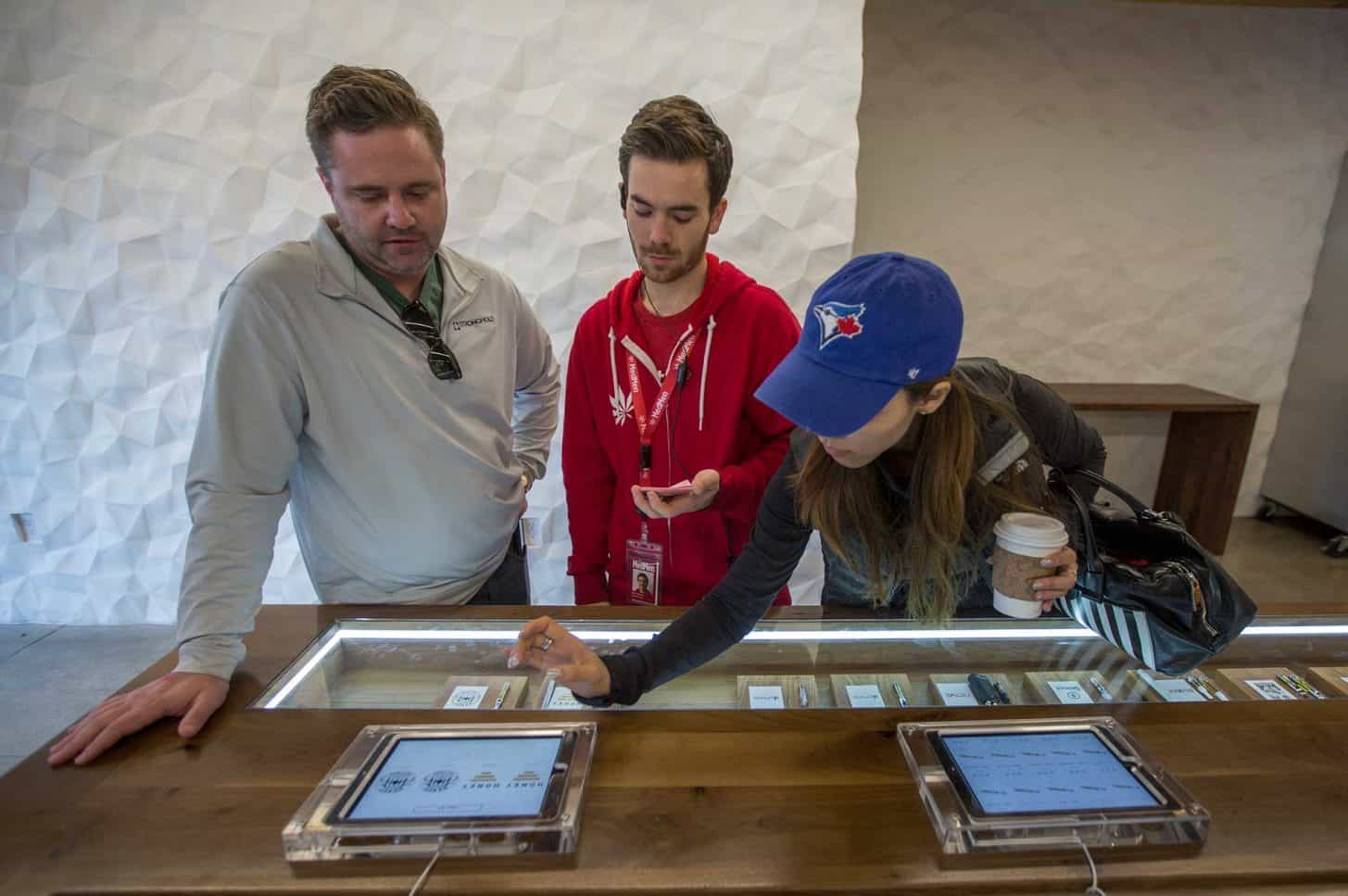
A bud tender helps customers select cannabis products at MedMen in West Hollywood, California. (Photo by David McNew/Getty Images)
California’s government hasn’t been quite as fast to move into the new market. Selling, transporting and growing cannabis legally requires a permit. Previously, distribution had been a “bring a bag of weed in a truck” kind of affair, but new laws state distributors should be keeping track of all sales on paper until a new computer system comes online. There is a fear that California’s market will grow quicker than permits can be granted. The licenses issued so far are temporary and will need re-issuing in July when the transition period ends and more stringent requirements are placed on the industry. All cannabis sold after the transition must be tested, and there’s currently a significant shortage of labs to do that testing. If the spoils go to the highest bidders, then those larger, fatter operations will be able to afford to sell legal weed long term, and the smaller growers will be forced to wait it out or go out of business altogether.
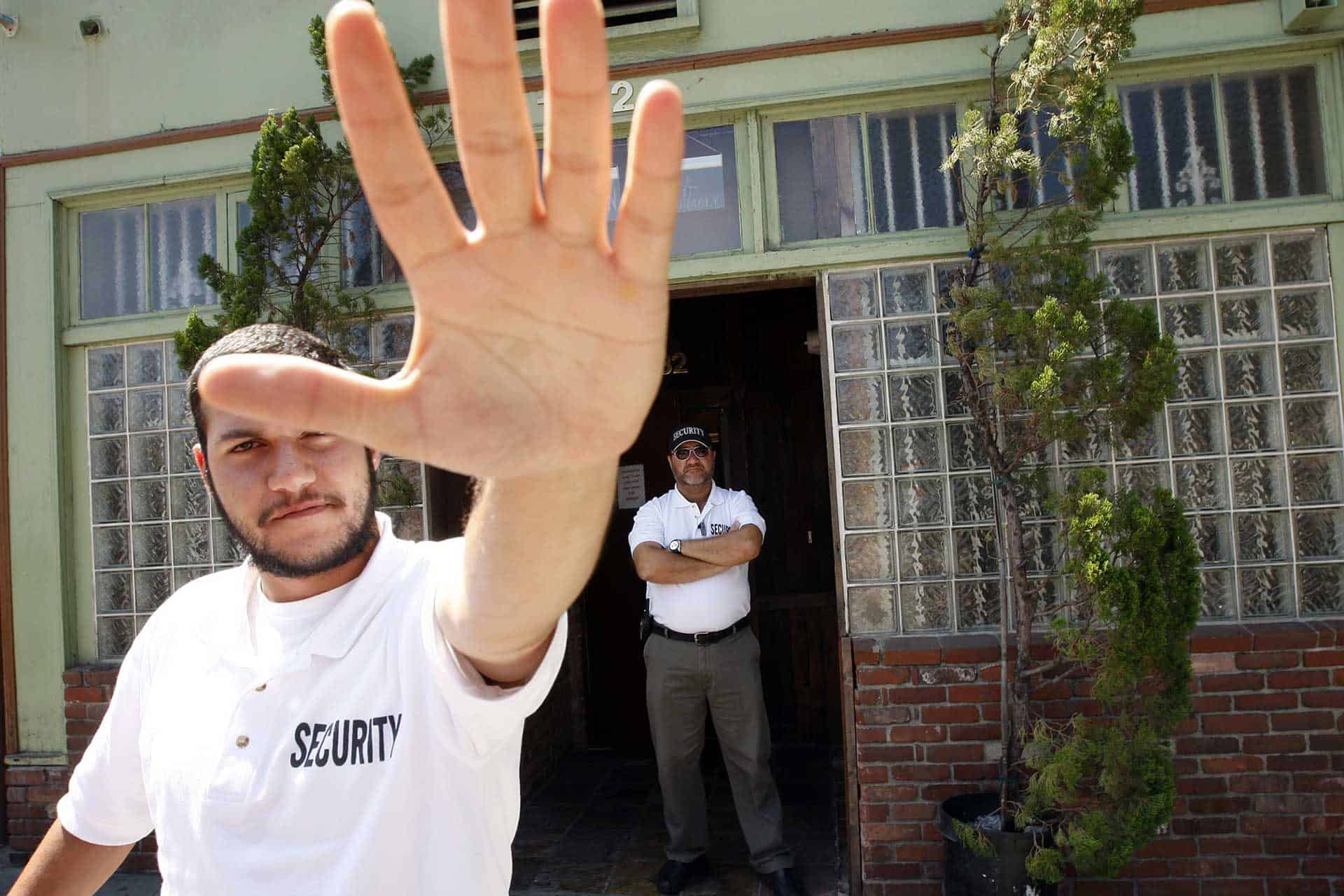
A security guard working for the Van Nuys Organics medical marijuana dispensary puts his hand in front of the camera as the photographer takes a picture of the dispensary storefront from the public sidewalk in the Eagle Rock section of Los Angeles, California. (Photo by David McNew/Getty Images)
Even more legislation is being discussed to deal with the issue of operating motor vehicles while on marijuana. Obviously, it’s a stupid idea to drive while you’re high, but the big question is how high is too high and how can police test your intoxication? Experts at UC San Diego told the Sac Bee that blood testing (which is used in some states) isn’t really that useful in determining if someone is high at the time. Regular users might accumulate a lot of THC in the blood without being impaired. Without an easy test on the horizon, police are setting up checkpoints and relying on the good old “stand on one leg” test to determine if you’re safe to drive.
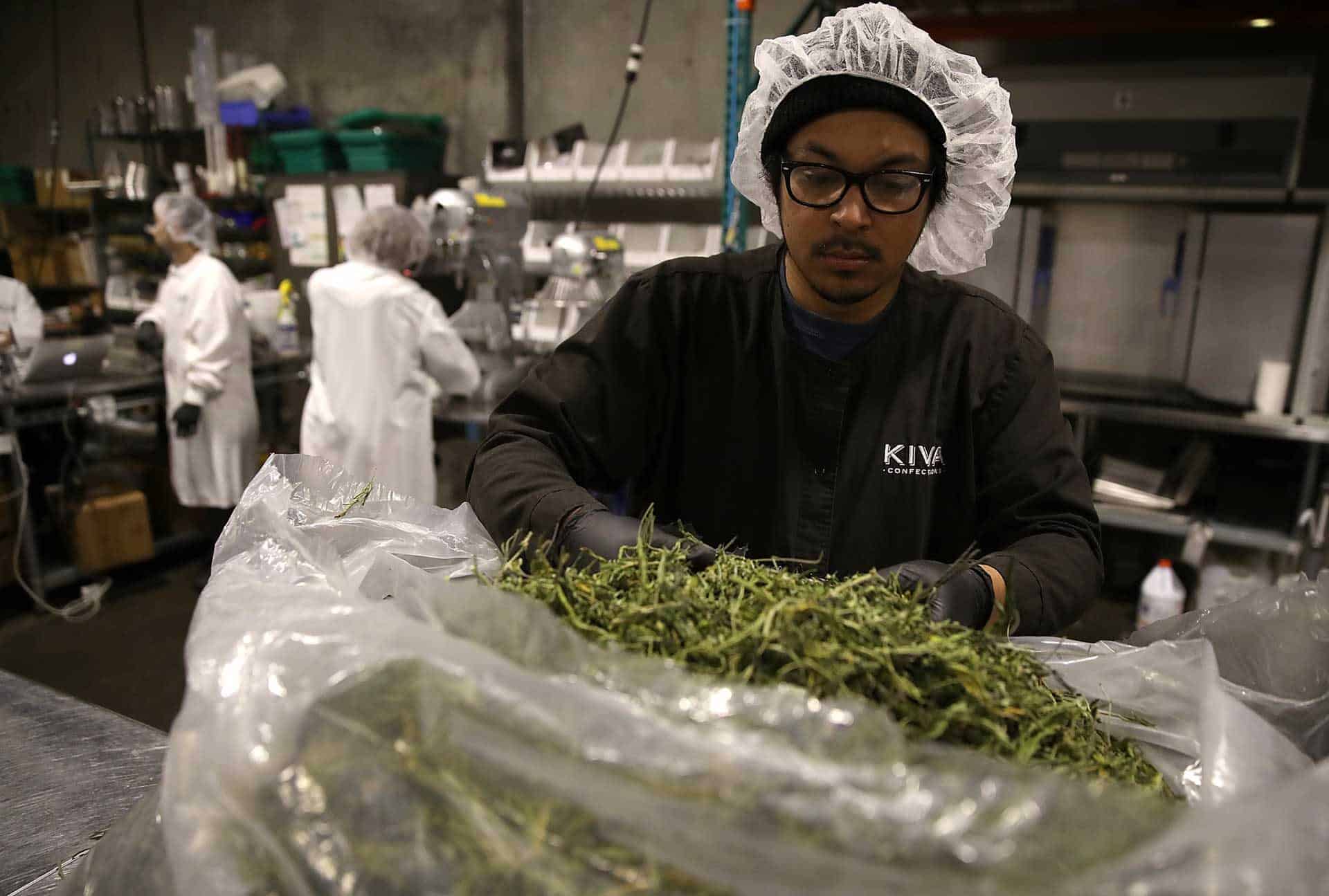
A worker prepares to package freshly made marijuana infused chocolate bars at Kiva Confections on January 16, 2018 in Oakland, California. (Photo by Justin Sullivan/Getty Images)
Taking the “we all make mistakes approach,” state legislators introduced policy to allow minor pot crimes to be removed from criminal records. Rob Bonta (D-Alameda) said Californians need a “simpler and expedited pathway” to clean up their pasts and has pushed for a bill that would wipe away convictions that are no longer considered crimes. Under current law, hippies caught with a joint in the ’70s might still be barred from working in day care today. This is great for U.S. citizens, but if you’re a green card holder (the immigration kind of green card) this is of no help to you. Immigration attorneys suggest that, unless you are a U.S. citizen, you should avoid any documented purchase or weed use as it is federally prohibited and can be grounds for revoking your status.
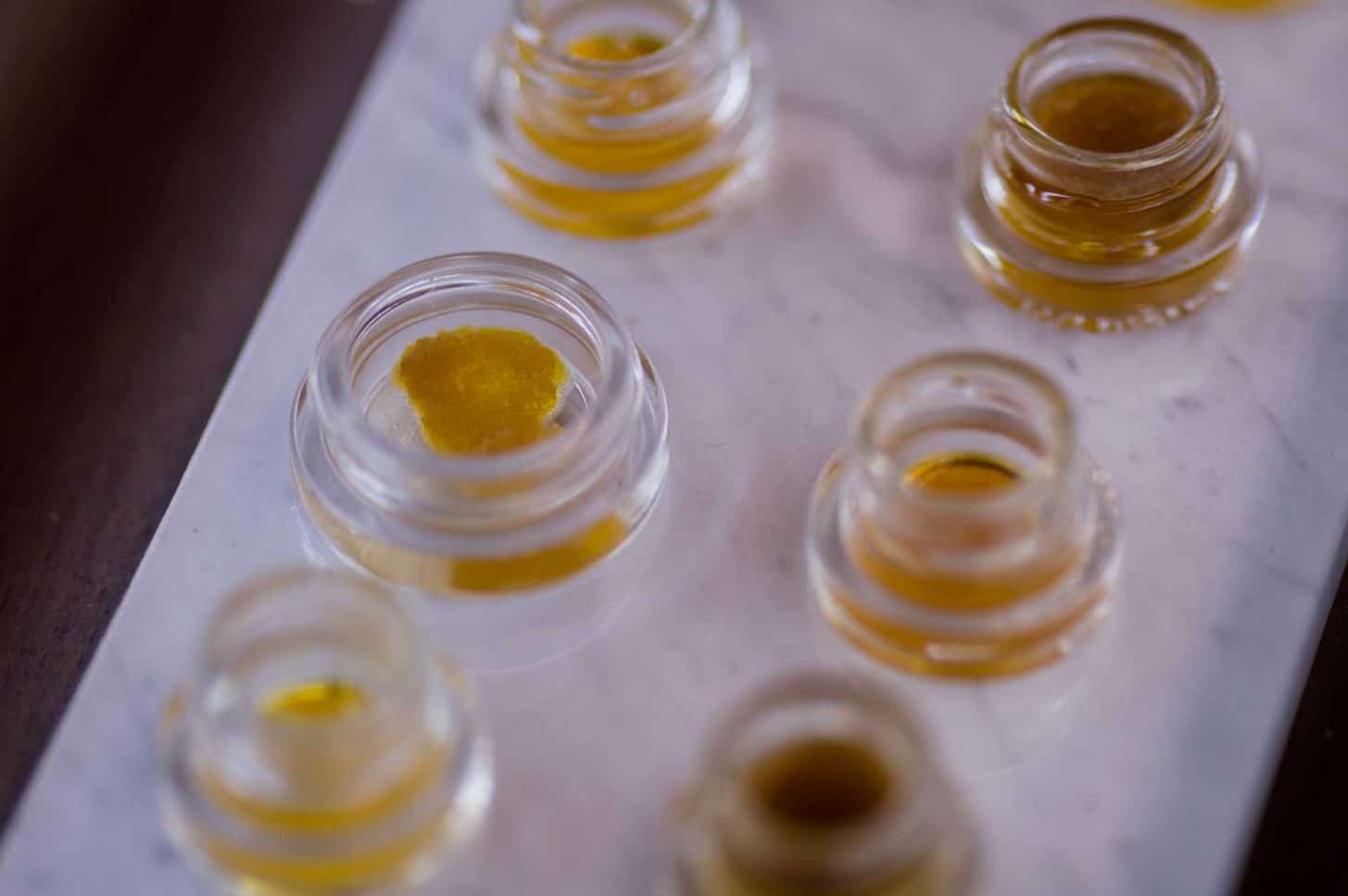
Cannabis products are displayed at MedMen. (Photo by David McNew/Getty Images)
What’s the takeaway from January? We’ve still got a lot of work to do. Fortunately, the real deadline for many smaller growers to get caught up is July 1, when the transition period ends. Until then, this handy tool helps sort out what is legal and illegal where you live. Oh, and if you want to know how much that Jack in the Box meal costs … $4.20. Duh. Sadly they stopped selling them on January 25, so now you’ll have to get high and eat a burrito instead. So, come February, some things really won’t have changed much at all.
This CA Violinist Just Won the MacArthur Genius Grant
His audiences range from Walt Disney Concert Hall to LA’s Skid Row.
This Coastal California City Offers a Path to Dealing With Rising Sea Levels
More paradise. Less parking lots.
Get the Latest Stories






